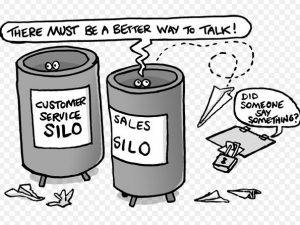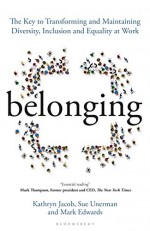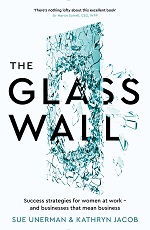Agencies and marketers need to be more careful than ever to get rid of silos in campaign development.
Things go wrong when there are silos.
Here’s two reasons why:
First of all silos mean that the right people aren’t always in the decision making room at the right time.
In her assessment of the recent Centrica review, group CMO Margaret Jobling astutely said that the days of “channels and everybody operating in splendid isolation is well gone”. She pointed out that “It is no longer clear where, for example, media and content creation start and stop”
Often what happens as a matter of course is that media and creative might be briefed together, but then creative tissue sessions may go ahead without media people present (and should not). Media strategy and execution meetings may exclude the creatives (and should not). We shouldn’t be separating the medium and the message in this way because the medium is the message and so this common practice is not only anachronistic it is damaging.
At planning and development stages of creation of work there is no such thing any more as a creative meeting that the media experts shouldn’t go to. There is no such thing any more as a media meeting that doesn’t need creative input.
The damaging result of this siloed behaviour is that too much time is spent fighting fires.
The job of many senior managers too often revolves around making sure that a situation that has begun to go off course is retrieved and sorted out. Those fires that start because the media people and creative people are not close enough during the ad campaign’s development process are so easily avoidable.
The more the senior people of any organisation spend time fighting fires (and some time is surely inevitable) the less good work is done. It slows you down and that’s not a good idea in an industry that’s changing and transforming as fast as this one.
The second problem is that when you work in silos, you end up encouraging anachronistic thinking that harms the work; our industry is awash with heritage practices, and one of the most debilitating is the way in which agencies have been built on the basis of competing with each other, even when they are NOT in competition.
Division rarely makes any work better. Tribal divisions are detrimental, with one tribe regarding other disciplines as “other”. Sometimes this leads to fear and disrespect. For the future of great work we must fight against these demarcations and make everyone a part of the team and every type of thinking belong.
This means not sticking in your role. If the media practitioner is confined to engineering the pipes through which the creative flows then that’s not good enough (and vice versa). Stick your nose, and your opinion in every aspect of the work. Diversity and belonging isn’t just an issue of appearance, race, religion or heritage. It is also an issue for different types of thinking and professional background.
Collaboration is much talked about – easier to talk about than to deliver. Working together takes effort, but that effort is more than worthwhile, and indeed is essential in light of the complexity of today’s communications environment.
In my experience great work, the work that grows brands, comes from teams that work together without silos.




120 seconds… but I want it now
Wednesday, September 25th, 2019Several small children were put in a viewing room by scientists at Stanford University in the 1960s. Presented with a plate with a single marshmallow on it, they were told that if they waited and didn’t eat it in the next fifteen minutes then they could have two marshmallows as a reward.
The four year olds were then filmed as they struggled to resist the immediate gratification of the single treat in favour of obeying the scientist and waiting for the requisite time for the full double treat.
Stanford then followed the subjects into later life where it was established that the children who had waited had better life outcomes in general compared to those who had succumbed to temptation and couldn’t wait to satisfy their sweet tooth.
There are commentators in our industry who believe that the problems of marketing in the 21st century are evidence of teams run by people who cannot wait for longer term rewards of sustained business metrics. They’re addicted to immediate gratification in the shape, not of marshmallows, but of short term digital metrics.
Has our industry failed the marshmallow test?
Last century immediate metrics of success in media were hard to come by. Audience measurement was available increasingly speedily, but the outcomes of success in terms of business took time to assess.
Google put an end to waiting. One of the revolutions that paid search delivered was only paying for click through. An immediate outcome with minimum risk. As the internet revolution overall took hold a whole host of immediately measurable results became available to digital practitioners, and only with time came the understanding that these metrics themselves have some flaws. And short term delivery does not always mean long term growth.
Binet and Field’s latest dive into the IPA databank calls more businesses to invest longer term. Their initial conclusion was that every business should invest 60% of their comms budgets in long term branding. Now amended by sector the new analysis stretches the recommendations for some sectors to 70-90%.
Why do so many find this difficult to adhere to? Part of the reason is unquestionably the board/brand divide. IPA/FT research reveals that whilst top boards value brands in theory (after all they have a proven value on their balance sheets) they admit that they don’t understand brand building or media.
Another reason may well be the addiction to short term targets. Easy to set, easy to game, easy to achieve. Great for an instant endorphin rush of satisfaction. Not necessarily so great for brand building, or for the public’s outlook on advertising in general as ISBA and the AA have demonstrated. Are there fewer people around who have the patience to wait for that second marshmallow?
There’s a lot of debate about how to recruit into our industry. Job descriptions are being reviewed for gender bias. Interviews are proven not to be a guarantee of successful recruitment.
While this debate is ongoing maybe we should add another dimension.
Maybe this should be the new recruitment test. One treat now or two in fifteen minutes. For brands to continue to thrive we must break that addiction to achieving short term targets or we are in danger of running brands into the ground and losing the heritage built across generations.
Posted in MediaComment | No Comments »